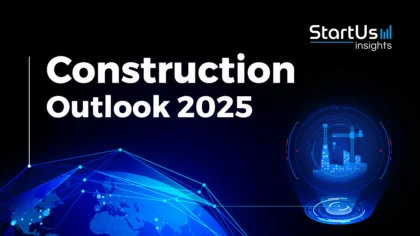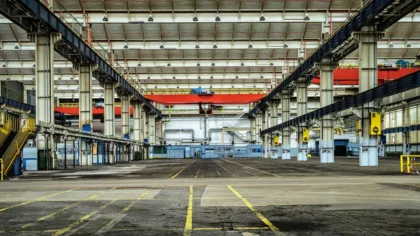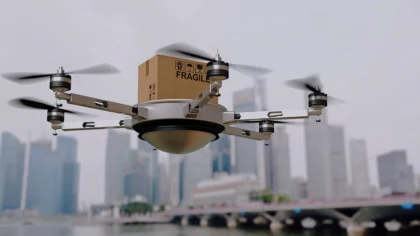Accelerate Productivity in 2025
Reignite Growth Despite the Global Slowdown
The next wave of digital innovation is on the verge of transforming the construction industry. Maturing technologies such as Additive Manufacturing, the Internet of Things, and Smart Materials all have enormous potential to bring disruptions in how buildings and infrastructures are designed, constructed and connected.
At StartUs Insights, we examined more than 1.500 startups and structured our results in the Construction Innovation Map to demonstrate how this wave of emerging technologies will bring fundamental change to this traditional industry, whose size is estimated to reach 8.4€ trillion in 2020.
Smart Materials
Smart Materials are specifically designed to have controllable and adjustable properties depending on external stimuli, such as stress, temperature, and moisture. One prominent example are photovoltaic materials to build windows, facades, and roofs that produce solar energy. Another example, self-healing materials can prevent many structural damages over time and provide maximum efficiency of thermal bridging.
Virtual & Augmented Reality (VR & AR)
3D models in VR/AR allow companies to build, enhance or modify construction concepts. A close-to-reality interactive simulation of a construction proposal in VR/AR can boost stakeholders’ and/or clients’ understanding of design ideas. Moreover, a sophisticated 4D simulation enables engineers to test their designs’ stability over time and help them to detect potential structural weak points, forecast erosions, and improve structural resilience.
3D Printing
3D Printing, or additive manufacturing, technologies have been advancing rapidly in recent years. 3D Printing has already been widely adopted to create very detailed models and to print particular real-size objects or parts of them that are difficult to produce. Similarly, by using 3D Printing and similar technologies, added materials, such as plastic, metal, and concrete are printed layer-upon-layer to produce large objects or even an entire building/structure on-site to cut costs as the additive manufacturing process is cheap, fast and flexible.
Building Information Modelling (BIM)
Building Information Modelling generates and manages the digital representation of physical and functional characteristics of a structure/building. All data in a BIM can be analyzed for consistency to save time and detect potential issues before they cause a problem. A visualization of BIM can be used for presentation and improving communication among stakeholders.
Internet of Things (IoT)
With sensors in the critical point of a structure or infrastructure, cloud-based IoT technologies monitor structural conditions in real-time and catch every signal of an upcoming threat to infrastructure. Thus it allows for the immediate implementation of improvements and eliminates the need for routine checkups. Predictive analytics from collected data also recommends incremental adjustments to prevent future issues.
Big Data, Artificial Intelligence & Smart Construction Management
Smart Construction Management Software equipped with Big Data/AI technology stores a vast amount of business & construction data to help automate operational & construction processes. These emerging technologies optimize workflows and improve the efficiency of procurement and logistics of a complex construction process.
Green Building
Green Building refers to a holistic approach towards a building/structure and its full life-cycle aiming at being environmentally responsible and resource-efficient. For example, a building with an advanced material & energy management system can minimize the use of energy throughout its life-cycle. In addition, photovoltaic glass, batteries & smart energy management allow buildings to be energy self-sufficient. Combined, a building needs almost no external energy input through its life-cycle.
Drones
Drones equipped with sensing technology provide 3D models & data to improve the engineering process. Its small size allows for the inspection of inaccessible areas of a structure. Precise and high-quality information provided by drones helps to create resourceful and efficient construction solutions.
Disruptive Startups In The Construction Industry Include:
- Polysolar’s PS-CT panel design was released in 2015 and uses photovoltaic glass as a structural building material forming windows, facades, and roofs. The glass, which is variable in transparency, produces renewable electricity and is described as the “future of building-integrated materials”.
- ArqVR offers a way for multiple users to experience the same design in real-time, through either phone- or computer-based VR. The Spanish startup develops VR experiences from drawings, BIM, or 3D models allowing companies to build, enhance or modify at will. For construction companies, this model presents an advanced way to assess the pros and cons of a project.
- MX3D, a Netherland-based startup, researches and develops a robotic 3D print technology. The startup’s robots are ready to print sustainable materials such as metals and synthetics in any size or shape. To prove the assets of their technology, MX3D created the first 3D printed steel bridge in Amsterdam.
- Spanish startup CL3VER offers a proprietary web-based platform for architecture and construction industries to visualize, present, and collaborate on projects in 3D and VR. Providing interactive 3D on any device, the solution allows for project presentations, virtual tours and walkthroughs among other features.
- London-based Converge develops wireless and cloud-based technologies to monitor sensors in real-time. The startup specializes in monitoring concrete maturity including factors such as temperature, humidity, pressure, and pH levels. This solution eliminates the need for manual monitoring and lowers costs as well as carbon emission.
- Danish startup GenieBelt created a project management software for the construction industry. The interface bundles a few valuable features such as all necessary information about a project, communications, live monitoring, web & mobile access as well as easy-to-perceive reporting material.
- Italian startup Upgen explores the potential of kinetic energy in roadways with their solution LYBRA. The device is installed ground flush in areas where vehicles are expected to reduce their speed. LYBRA helps respect speed limits and retrieves the kinetic energy wasted during deceleration, allowing to generate energy from traffic movement.
- Israeli startup Dronomy transforms ordinary consumer drones into powerful construction equipment, delivering precise and comprehensive construction site data. Project monitoring and site management are improved through the 3D data provided by their autonomous – and situation-aware – drones.
The future of the construction industry is based on gathering building and construction data, adopting predictive analytics, and adopting new building techniques and materials. In order to adapt to this disruption, companies must actively transform their business models and processes, and incorporate these digital technologies.
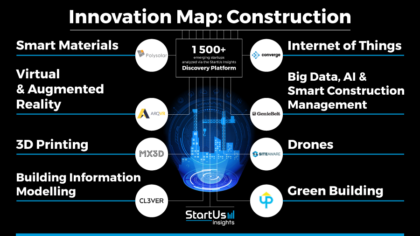

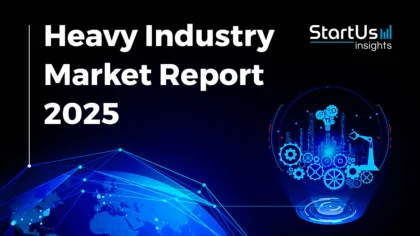
![AI in Construction: A Strategic Guide for Industry Leaders [2025-2030]](https://www.startus-insights.com/wp-content/uploads/2025/04/AI-in-Construction-SharedImg-StartUs-Insights-noresize-420x236.webp)
